
Buddhism is the largest religion in Singapore, practiced by approximately 31.1% of the population as of 2020. As per the census, out of 3,459,093 Singaporeans polled, 1,074,159 of them identified themselves as Buddhists.

The Kong Meng San Phor Kark See Monastery, is a Buddhist temple and monastery in Bishan, Singapore. Built by Zhuan Dao in the early 20th century to propagate Buddhism and to provide lodging for monks, this monastery is the largest Buddhist temple in Singapore. It is the parent organization of the Buddhist College of Singapore founded in 2006. It is one of the two private crematoria, while the other one is Tse Toh Aum Temple.
The Dhammakaya Tradition or Dhammakaya Movement, sometimes spelled as Thammakaai movement, is a Thai Buddhist Tradition founded by Luang Pu Sodh Candasaro in the early 20th century. It is associated with several temples descended from Wat Paknam Bhasicharoen in Bangkok.
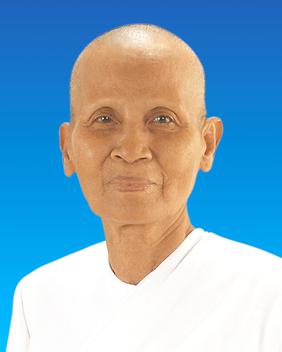
Chandra Khonnokyoong, 19 January 1909 – 10 September 2000) was a Thai Maechi (nun) who founded Wat Phra Dhammakaya. Religious studies scholar Rachelle Scott has described her as "the most influential female meditation teacher in Thailand". Her own students call her Khun Yay Achan Mahā-ratana Upasika Chandra Khonnokyoong, an honorific name meaning "grandmother-master-great-gem devotee". Although illiterate, she was widely respected for her experience in meditation, which is rare for a maechi. She managed to attract many well-educated students, despite her rural background and illiteracy. Some scholars have raised the example of Maechi Chandra to indicate that the position of women in Thai Buddhism may be more complex than was previously thought.
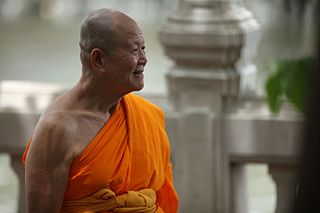
Luang Por Dattajivo, also known by his birth name Phadet Phongsawat and former ecclesiastical title Phrarajbhavanajahn, is a Thai Buddhist monk. He is the former deputy-abbot of Wat Phra Dhammakaya and the vice-president of the Dhammakaya Foundation, and was the observing abbot of the temple from 1999 until 2006, and again from 2011 until 2016. As of December 2016, he was still widely considered the de facto abbot. He met Mae chi (nun) Chandra Khonnokyoong and Luang Por Dhammajayo in his student years, and they have been his teachers throughout his life.
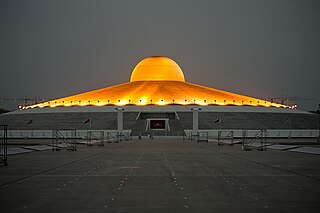
Wat Phra Dhammakaya is a Buddhist temple (wat) in Khlong Luang district, in the Pathum Thani province north of Bangkok, Thailand. It was founded in 1970 by the maechi (nun) Chandra Khonnokyoong and Luang Por Dhammajayo. It is the best-known and the fastest growing temple of the Dhammakaya tradition. This tradition, teaching Dhammakaya meditation, was started by the meditation master Luang Pu Sodh Candasaro in the early-20th century. Wat Phra Dhammakaya is one of the temples that emerged from this tradition and is part of the Mahā Nikāya fraternity. The temple is legally represented by the Dhammakaya Foundation. It aims to adapt traditional Buddhist values in modern society, doing so through modern technology and marketing methods. The temple has faced controversy and a government crackdown. Wat Phra Dhammakaya plays a leading role in Thai Buddhism, with theologian Edward Irons describing it as "the face of modern Thai Buddhism".

Dhammakaya Meditation is a method of Buddhist Meditation developed and taught by the Thai meditation teacher Luang Pu Sodh Candasaro (1885–1959). In Thailand, it is known as Vijjā dhammakāya, which translates as 'knowledge of the dhamma-body'. The Dhammakaya Meditation method is popular in Thailand and other parts of Southeast Asia, and has been described as a revival of samatha (tranquility) meditation in Thailand.

The Burmese Buddhist Temple is the oldest Theravada institution and the only Burmese Buddhist temple of its kind in Singapore. Founded in 1875, the temple moved from its original Kinta Road premises to Tai Gin Road off Ah Hood Road in Novena in 1988. The temple houses the largest pure white marble statue of the Buddha outside Myanmar, and has become a religious landmark for Burmese and Singaporean devotees to make merit and take part in merit-sharing activities alike.
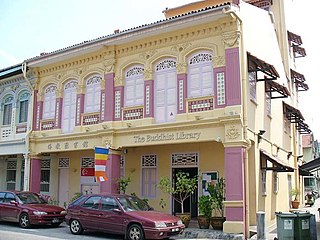
The Buddhist Library is the first dedicated Buddhist library in Singapore. The library, which is located in a shophouse in Geylang, aims to meet the needs of the Buddhist community and anyone interested in Buddhism. It is unique in that it is not a voluntary association or a temple and because it takes a non-sectarian approach to Buddhism. Besides functioning as a lending library, it also organises Dhamma talks, accredited Buddhist courses, public art exhibitions and welfare work locally and abroad.

Wat Intharawihan or Wat Intharavihan is a Third Class Royal wat (temple) located in the Phra Nakhon District of Bangkok, Thailand. It is noted for its 32 metres (105 ft) high standing Buddha statue known as Luang Pho To or "Phra Si Ariyamettrai" that was erected on the inspiration of the still highly revered abbott Somdej Toh.

Luang Pu Thuat was a Buddhist monk, born in Dee Luang sub district,Sathing Phra district, Songkhla,, Thailand. He is a revered Buddhist monk who lived in Siam and is said to have performed miracles.

A wat is a type of Buddhist temple and Hindu temple in Cambodia, Laos, East Shan State, Yunnan, the Southern Province of Sri Lanka and Thailand. The word wat was borrowed from Sanskrit vāṭa, meaning 'enclosure'. The term has varying meanings in each region, sometimes referring to a specific type of government-recognised or large temple, other times referring to any Buddhist or Hindu temple.
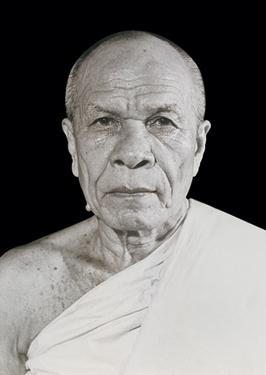
Luang Pu Sodh Candasaro, also known as Phramongkolthepmuni, was a Thai Buddhist monk who served as the abbot of Wat Paknam Bhasicharoen from 1916 until his death in 1959. He founded the Thai Dhammakāya school in the early 20th century. As the former abbot of Wat Paknam Bhasicharoen, he is often called Luang Pu Wat Paknam, meaning 'the Venerable Father of Wat Paknam'. He became a well-known meditation master during the interbellum and the Second World War, and played a significant role in developing Thai Buddhism during that period. He is considered by the Dhammakaya tradition to have rediscovered Vijja Dhammakaya, a meditation method believed to have been used by the Buddha himself. Since the 2000s, some scholars have pointed out that Luang Pu Sodh also played an important role in introducing Theravāda Buddhism in the West, a point previously overlooked.

Wat Ananda Metyarama Thai Buddhist Temple is a Theravada Buddhist monastery and temple in Singapore. The monastery was originally set up by Venerable Luang Phor Hong Dhammaratano with his disciple Samanera Boonler. The temple is located at 50B Jalan Bukit Merah.
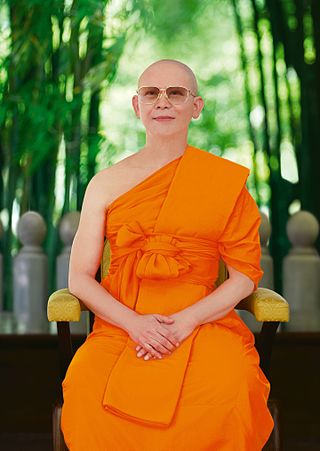
Luang Por Dhammajayo, also known by the lay name Chaiyabun Suddhipol, is a Thai Buddhist monk. He was the abbot of the Buddhist temple Wat Phra Dhammakaya, the post he held until 1999 and again from 2006 to December 2011. In December 2016, he was given the post of honorary abbot of the temple. He is a student of the nun (maechi) Chandra Khonnokyoong, and is the most well-known teacher of Dhammakaya meditation. He has been subject to criticism and government response. However, he continues to be a spiritual leader that has significant influence in Thai society. Luang Por Dhammajayo's approach to Buddhism seeks to combine the ascetic and meditative life with modern personal ethics and social prosperity.

The Sri Lankaramaya Buddhist Temple is located at St. Michael's Road in Bendemeer, Singapore. The temple is the primary Sri Lanka Buddhist temple of its kind in Singapore. It is one of the Theravada Buddhist temples in Singapore which is founded years back from Buddhist monks from Sri Lanka. It is operated by the Singapore Sinhala Buddhist Association which was established in 1920.

Wat Phra Dhammakaya is a Buddhist temple in Thailand. It was founded in 1970 by the maechi (nun) Chandra Khonnokyoong and Luang Por Dhammajayo. The temple's founding has roots in the Dhammakaya tradition founded by Luang Pu Sodh Candasaro at Wat Paknam Bhasicharoen in the early 20th century. Wat Phra Dhammakaya is known for its modern dissemination methods and use of technology.
Khun Parissuddho or in honorific name "Phra Dhebwiddhayakama" was a Thai Buddhist monk based in Wat Ban Rai. He died on 12 May 2015, age 91.
















